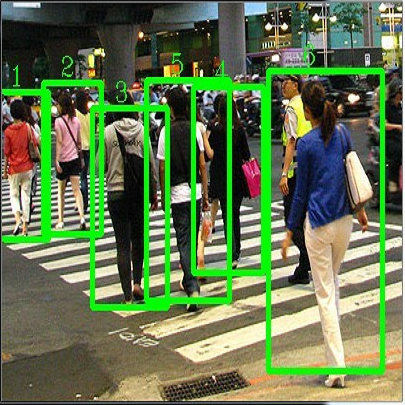A core component of the recent success of self-supervised learning is cropping data augmentation, which selects sub-regions of an image to be used as positive views in the self-supervised loss. The underlying assumption is that randomly cropped and resized regions of a given image share information about the objects of interest, which the learned representation will capture. This assumption is mostly satisfied in datasets such as ImageNet where there is a large, centered object, which is highly likely to be present in random crops of the full image. However, in other datasets such as OpenImages or COCO, which are more representative of real world uncurated data, there are typically multiple small objects in an image. In this work, we show that self-supervised learning based on the usual random cropping performs poorly on such datasets. We propose replacing one or both of the random crops with crops obtained from an object proposal algorithm. This encourages the model to learn both object and scene level semantic representations. Using this approach, which we call object-aware cropping, results in significant improvements over scene cropping on classification and object detection benchmarks. For example, on OpenImages, our approach achieves an improvement of 8.8% mAP over random scene-level cropping using MoCo-v2 based pre-training. We also show significant improvements on COCO and PASCAL-VOC object detection and segmentation tasks over the state-of-the-art self-supervised learning approaches. Our approach is efficient, simple and general, and can be used in most existing contrastive and non-contrastive self-supervised learning frameworks.
翻译:最近自我监督学习成功的核心部分是数据扩增,它选择了图像的次区域,作为自我监督损失中的积极观点。基本假设是,某个特定图像的随机裁剪和重新缩放区域共享有关感兴趣对象的信息,这是学习到的演示将捕捉到的。这种假设在诸如图像网络等数据集中最令人满意,那里有一个大型的、中心对象,非常可能出现在全图像的随机作物中。然而,在其他数据集中,如OpenImaages或COCO,它更能代表真实世界不精确的数据。在图像中,通常有多个小对象。在这个工作中,我们显示基于通常随机裁剪裁成的图像区域在这类数据集上表现很差。我们建议用从对象建议算法中获得的作物替换一个或两个随机作物。这鼓励模型学习对象和场景层次的语义表达方式。我们称之为天体识别的裁剪裁法,结果也显著超过屏幕不精度的自我定位,在常规的PA8级和物体检测基准中,我们用Oral-RO-L 学习了常规分类和常规的升级。例如,在常规的PA-roal-roal-roal-roal-al-lax-roal-al-al-lax-lax-lax-lax-lax-lax-to-to-lax-lax-laxxxx和O-to-to-to-to-roal-toal-to-to-to-to-to-la-laxxxxxx-to-to-to-to-to-to-to-to-to-to-to-to-to-to-to-to-to-to-to-to-to-to-to-to-to-to-to-to-to-to-to-to-to-to-to-to-al-a-to-to-to-a-a-a-to-to-to-a-lacal-toal-a-a-a-a-a-a-a-al-al-al-a-a-a-a-a-a-a-a-a-a-a-a-a-a-a-a-a-a-a-a-a-a-a-a



